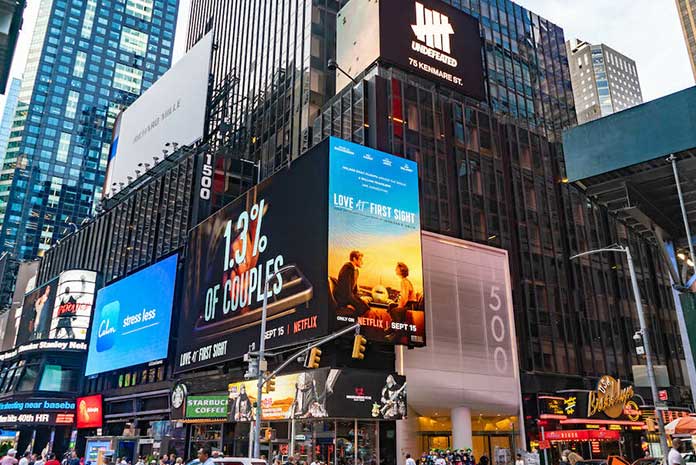Billboard advertising stands out in today’s fast-moving digital landscape as an effective strategy for businesses looking to reach and connect with targeted audiences. Thanks to digital technology, billboard ads have transitioned from static displays into dynamic digital screens offering greater flexibility and creativity for communicating messages directly to consumers. We will explore here how businesses can incorporate digital billboards effectively into their marketing efforts for maximum impactful campaigns that help achieve goals more easily.
Understanding Digital Billboard Advertising
Digital billboard ads present numerous advantages over more conventional forms. While traditional billboards remain static and cannot change with real-time updates, digital versions offer dynamic content which ensures messages stay timely and pertinent for their target audiences.
Digital billboards’ pinpoint targeting capabilities allow advertisers to target specific demographics or geographic areas more precisely than ever, leading them to achieve unprecedented accuracies when reaching desired demographics or locations. Studies confirm their effectiveness at building brand recognition while sparking meaningful consumer interactions – solidifying them as integral tools in modern marketers’ arsenals.
Digital billboards provide advertisers with an adaptable medium that transcends static media’s limitations, offering advertisers the possibility of crafting engaging campaigns that speak directly to their target audiences. Digital billboards’ seamless incorporation of multimedia elements like videos, animations, and interactive features helps grab attention quickly while leaving an indelible mark on viewers’ memories.
Budget Considerations for Digital Billboard Campaigns
Proper budget allocation is of utmost importance when planning digital billboard advertising campaigns, and businesses must carefully take into account design expenses, placement fees, campaign duration, and other aspects in their planning to ensure optimal resource usage and achieve campaign objectives. While digital billboards provide multiple advantages like real-time content updates and improved audience targeting capabilities; budget management remains key to maximize return and achieve campaign objectives while adhering to budget restrictions. By strategically targeting high-traffic areas or using cost-effective advertising solutions businesses can maximize results while adhering to budget restrictions without breaking.
Integrating digital billboards into marketing strategies requires taking an expert, methodical approach to budgeting; one which strikes a balance between expansive reach and fiscal responsibility. Adopting a data-driven budget allocation method enables businesses to identify high-impact opportunities while optimizing resource allocation accordingly, using advanced analytics tools allows advertisers to track campaign performance live while informing decision-making for real-time optimization efforts.
Content Creation for Digital Billboards
Generating engaging digital billboard content is at the center of any successful campaign. To capture passerby’s attention quickly and remain memorable for extended periods, businesses must use bold colors, captivating imagery, and succinct messaging that convey their brand message effectively in seconds. Aligning billboard advertising content with overall marketing objectives and brand identity helps maintain consistency and strengthen recognition across touch points.
Digital billboard content must also reflect the preferences and interests of its target audience, understanding demographics and behavior as a basis for producing engaging material that captures attention quickly while driving desired actions from target viewers.
Planning and Executing Your Billboard Campaign
A successful digital billboard advertising campaign begins with careful planning and strategic execution. Businesses must conduct extensive research to locate high-traffic areas with optimal placement opportunities for their ads – this may involve studying foot traffic patterns, demographic data, or competitor placement to inform decision-making processes. Furthermore, creating an extensive scheduling and rotation strategy ensures maximum exposure to their target audiences.
Monitor campaign performance in real-time and make data-informed adjustments as part of digital billboard effectiveness enhancement efforts. Businesses may utilize key performance indicators (KPIs), like impressions, engagement rates, and conversion metrics as measures of campaign success while making more informed decisions and increasing results by closely following KPIs such as impressions engagement rates conversion metrics to evaluate success making informed adjustments based on collected KPI data where needed.
Measuring Return on Investment and Evaluating Campaign Performance
Businesses looking to assess the efficacy of digital billboard advertising must monitor key performance indicators (KPIs) such as impressions, engagement rates, and conversion rates to gain valuable insight into consumer behavior and campaign effectiveness and thus optimize future campaigns with maximum return. Businesses should utilize analytics tools and resources in real-time to track campaign performance as it happens allowing data-driven decisions for increased billboard advertising efforts.
Conclusion
Digital billboards provide businesses with an effective tool for connecting with and engaging their target audience. By adding digital billboards into their marketing mix, businesses can maximize budget allocation while meeting goals more easily and driving consumer engagement – everything from creating compelling content creation sessions to planning campaigns involving digital billboards – through seamless billboard incorporation that opens doors of growth and success for their company.
Also Read: How To Do Marketing Automation With Active Campaign


